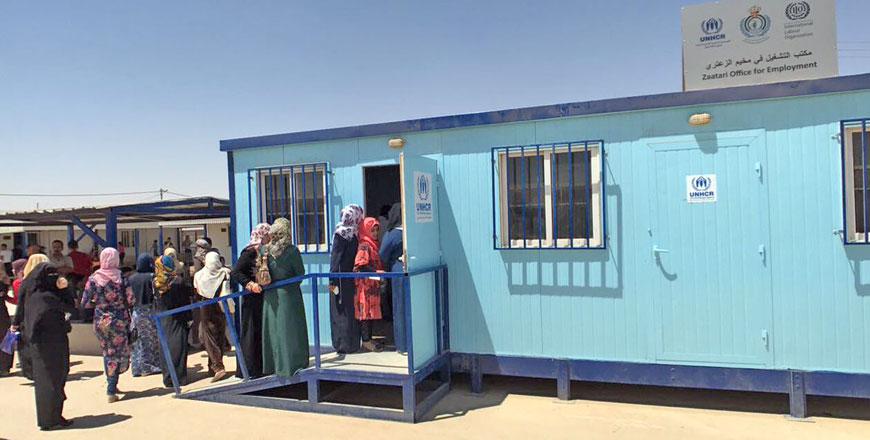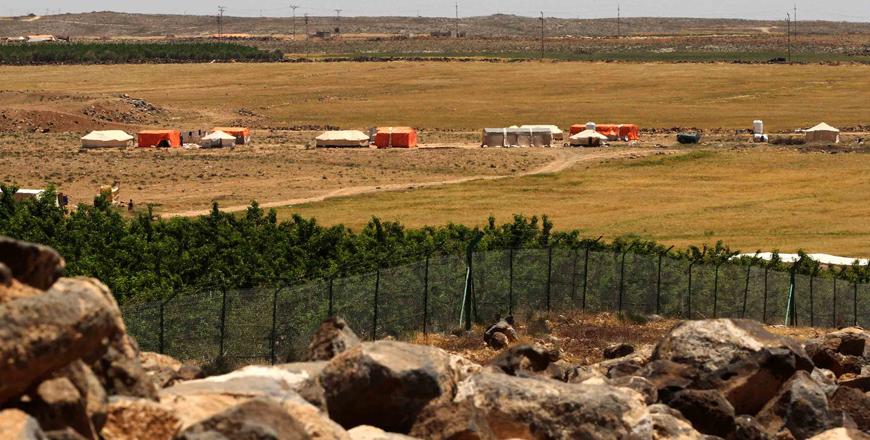You are here
Int’l survey highlights strong impact of refugee influx on employment among Jordanians
By Khetam Malkawi - May 16,2015 - Last updated at May 16,2015
AMMAN — The unemployment rate among Jordanians has increased from 14.5 per cent prior to the Syrian crisis in 2011 to 22.1 per cent at present, according to a recent report by international organisations.
Conducted by the International Labour Organisation (ILO) and the Norway-based FAFO institute, the “Impact of Syrian refugees on the Jordanian labour market” study showed that the employment situation for Jordanians prior to the Syrian crisis was characterised by a labour participation rate of 67 per cent among men and about 18 per cent among women.
However, at present the labour force participation rate for Jordanians is similar to what it was before the Syrian crisis, while the unemployment rate has increased from 14.5 to 22.1 per cent.
The rate stands at 42 per cent among Jordanian youths and 40 per cent among women alone, according to the report.
However, these figures are higher than the “official” figures the government announced early this year.
According to the government, unemployment rate in 2014 stood at 11.9 per cent, going down by 0.7 per cent compared with 2013, when it was 12.6 per cent.
Zayyan Zawaneh, an economist, said the ILO study confirms what economists in the Kingdom have been talking about since the start of the Syrian crisis and its impact on Jordan’s society and economy.
“The government was always trying to prove us wrong, claiming that it succeeded in managing the Syrian crisis impact on Jordanian society,” Zawaneh told The Jordan Times, adding that figures in the study reflect reality.
“The increase in unemployment rates will affect the country’s social fabric,” he said.
The pundit noted that the government’s main concern was to call on the international community to support its budget due to the impact of the Syrian crisis without actual work on how to deal on the ground with the influx of Syrians into Jordan.
Now, Jordanians are paying the price of this mismanagement, he said.
As for the participation of Syrians in the Jordanian labour market, report findings showed that “at present, about 51 per cent of Syrian men living outside camps participate in the Jordanian labour market”.
Meanwhile, only about 10 per cent of employed Syrians have obtained formal work permits, and “practically all Syrian refugees working outside camps are employed in the informal economy and outside the boundaries of Jordanian Labour Law”.
Of the 620,000 Syrian refugees registered in Jordan, only 20 per cent are in refugee camps, while the rest are in host communities. But according to official statistics, there are more than 1.4 million Syrians in the Kingdom and less than half of them are registered with UNHCR.
The largest numbers of Syrian refugees are located in the northern governorates of the country, according to the report, that was not officially launched, yet posted on the ILO website.
Amman, Irbid and Mafraq governorates alone are hosting more than 76 per cent of all the Syrian refugees in Jordan. Syrian refugees constitute 52 per cent of the total population of Mafraq, 12 per cent of Irbid’s residents and 7 per cent of the total population of Amman.
For Ahmad Awad, director of Phenix Centre for Economic and Informatics Studies, several factors have contributed to this situation.
On top of these is the high number of annual job seekers that currently reaches to 100,000, compared with only from 45,000 to 50,000 job openings.
In addition, Awad said the country’s economy is burdened and most of the industries that highly depend on “oil” witnessed a setback in the past few years, leading to the closure of 1,500 institutions and the layoff of thousands of workers as a result.
In addition, the local job market is already saturated with migrant Egyptian workers, hundreds of thousands of whom are not registered with the Labour Ministry.
The study, which covers the period since March 2011, is primarily based on a household survey carried out in February and March 2014, and which included a total of 3,800 households in the governorates of Amman, Irbid and Mafraq, including the Zaatari Refugee Camp. In addition, complementary information has been obtained from qualitative interviews and from secondary sources, including reports and news media.
At present, the study showed, more than 40 per cent of employed Syrians outside camps in Amman, Irbid and Mafraq work in the construction industry, while 23 per cent work in the wholesale and retail trade and repair industry, 12 per cent in manufacturing, and 8 per cent in the accommodation and food service industry.
The ILO report referred to the fact that about 30 per cent of the Jordanian workers who were employed in construction and in agriculture just before the crisis in Syria do not work in these industries today.
Moreover, the share of total Jordanian male workers employed in the construction industry decreased from 9 to 7 per cent from March 2011 to March 2014. At the same time, the share of total Syrian refugee workers in the construction industry increased quite substantially, indicating that Jordanians might have been crowded out of this industry by Syrians to some extent.
Similar signs of out-crowding can be found in the wholesale and retail trade industry, in which 23 per cent of Syrian refugee workers outside camps have found work.
Economic activities carried out by children are substantially more prevalent among Syrian children living outside camps than among Jordanian children. Only 1.6 per cent of Jordanian boys in the age group 9-15 are economically active, while more than 8 per cent of Syrian boys in the same age group are economically active. In the age group 15-18, about 37 per cent of Syrian boys are economically active, compared to about 17 per cent of Jordanian boys.
Child employment among Jordanian boys in the age group of 9-15 is less than 1 per cent, while the corresponding figure for Syrian boys is 3 per cent. Almost 14 per cent of Syrian boys in the 15-18 age group are employed, compared to 8 per cent of Jordanian boys of the same age.
Related Articles
AMMAN — The number of child labourers in Jordan has almost doubled in less than 10 years, and over half of them are employed in hazardous wo
AMMAN — One month after the government’s decision to allow Syrian refugees to obtain work permits, the Zaatari Office for Employment (ZOE) i
SALHIYEH, Jordan — A Syrian refugee couple and their baby boy were recently dropped from a UN food voucher programme and live on $9 (J


















